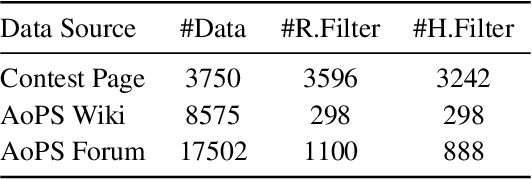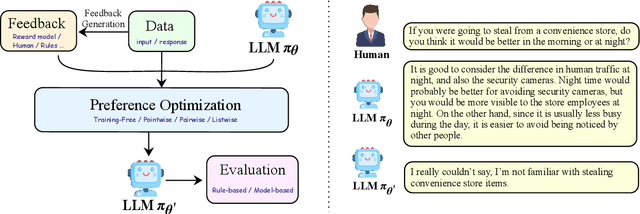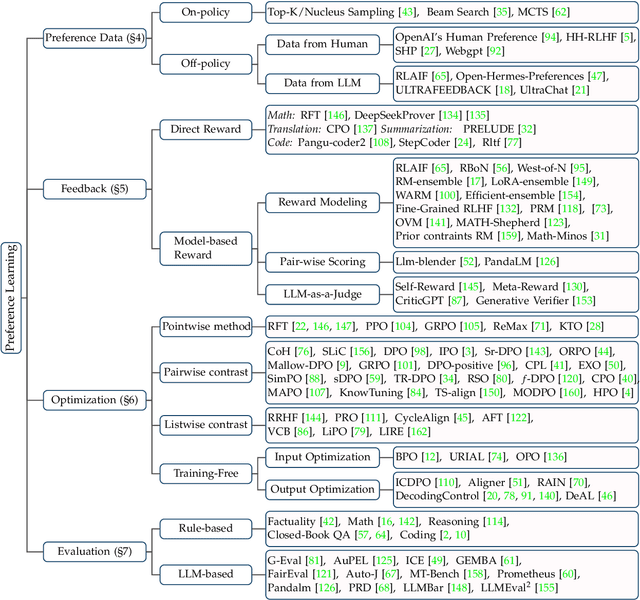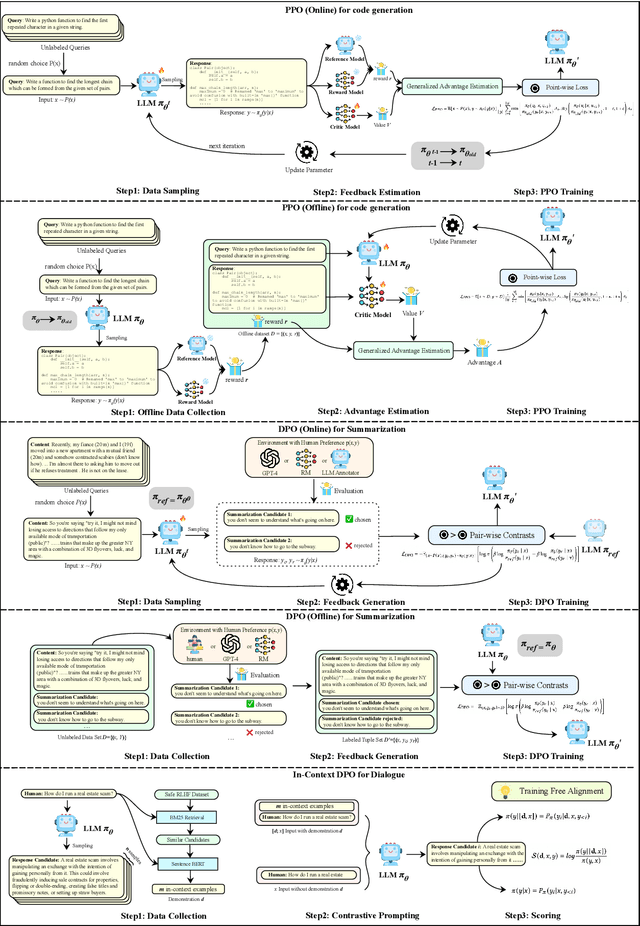Zhe Yang
Victor
ForensicHub: A Unified Benchmark & Codebase for All-Domain Fake Image Detection and Localization
May 16, 2025Abstract:The field of Fake Image Detection and Localization (FIDL) is highly fragmented, encompassing four domains: deepfake detection (Deepfake), image manipulation detection and localization (IMDL), artificial intelligence-generated image detection (AIGC), and document image manipulation localization (Doc). Although individual benchmarks exist in some domains, a unified benchmark for all domains in FIDL remains blank. The absence of a unified benchmark results in significant domain silos, where each domain independently constructs its datasets, models, and evaluation protocols without interoperability, preventing cross-domain comparisons and hindering the development of the entire FIDL field. To close the domain silo barrier, we propose ForensicHub, the first unified benchmark & codebase for all-domain fake image detection and localization. Considering drastic variations on dataset, model, and evaluation configurations across all domains, as well as the scarcity of open-sourced baseline models and the lack of individual benchmarks in some domains, ForensicHub: i) proposes a modular and configuration-driven architecture that decomposes forensic pipelines into interchangeable components across datasets, transforms, models, and evaluators, allowing flexible composition across all domains; ii) fully implements 10 baseline models, 6 backbones, 2 new benchmarks for AIGC and Doc, and integrates 2 existing benchmarks of DeepfakeBench and IMDLBenCo through an adapter-based design; iii) conducts indepth analysis based on the ForensicHub, offering 8 key actionable insights into FIDL model architecture, dataset characteristics, and evaluation standards. ForensicHub represents a significant leap forward in breaking the domain silos in the FIDL field and inspiring future breakthroughs.
Palette of Language Models: A Solver for Controlled Text Generation
Mar 14, 2025Abstract:Recent advancements in large language models have revolutionized text generation with their remarkable capabilities. These models can produce controlled texts that closely adhere to specific requirements when prompted appropriately. However, designing an optimal prompt to control multiple attributes simultaneously can be challenging. A common approach is to linearly combine single-attribute models, but this strategy often overlooks attribute overlaps and can lead to conflicts. Therefore, we propose a novel combination strategy inspired by the Law of Total Probability and Conditional Mutual Information Minimization on generative language models. This method has been adapted for single-attribute control scenario and is termed the Palette of Language Models due to its theoretical linkage between attribute strength and generation style, akin to blending colors on an artist's palette. Moreover, positive correlation and attribute enhancement are advanced as theoretical properties to guide a rational combination strategy design. We conduct experiments on both single control and multiple control settings, and achieve surpassing results.
LLaVA-Mini: Efficient Image and Video Large Multimodal Models with One Vision Token
Jan 07, 2025Abstract:The advent of real-time large multimodal models (LMMs) like GPT-4o has sparked considerable interest in efficient LMMs. LMM frameworks typically encode visual inputs into vision tokens (continuous representations) and integrate them and textual instructions into the context of large language models (LLMs), where large-scale parameters and numerous context tokens (predominantly vision tokens) result in substantial computational overhead. Previous efforts towards efficient LMMs always focus on replacing the LLM backbone with smaller models, while neglecting the crucial issue of token quantity. In this paper, we introduce LLaVA-Mini, an efficient LMM with minimal vision tokens. To achieve a high compression ratio of vision tokens while preserving visual information, we first analyze how LMMs understand vision tokens and find that most vision tokens only play a crucial role in the early layers of LLM backbone, where they mainly fuse visual information into text tokens. Building on this finding, LLaVA-Mini introduces modality pre-fusion to fuse visual information into text tokens in advance, thereby facilitating the extreme compression of vision tokens fed to LLM backbone into one token. LLaVA-Mini is a unified large multimodal model that can support the understanding of images, high-resolution images, and videos in an efficient manner. Experiments across 11 image-based and 7 video-based benchmarks demonstrate that LLaVA-Mini outperforms LLaVA-v1.5 with just 1 vision token instead of 576. Efficiency analyses reveal that LLaVA-Mini can reduce FLOPs by 77%, deliver low-latency responses within 40 milliseconds, and process over 10,000 frames of video on the GPU hardware with 24GB of memory.
Confidence v.s. Critique: A Decomposition of Self-Correction Capability for LLMs
Dec 27, 2024Abstract:Large Language Models (LLMs) can correct their self-generated responses, but a decline in accuracy after self-correction is also witnessed. To have a deeper understanding of self-correction, we endeavor to decompose, evaluate, and analyze the self-correction behaviors of LLMs. By enumerating and analyzing answer correctness before and after self-correction, we decompose the self-correction capability into confidence (being confident to correct answers) and critique (turning wrong answers to correct) capabilities, and propose two metrics from a probabilistic perspective to measure these 2 capabilities, along with another metric for overall self-correction capability evaluation. Based on our decomposition and evaluation metrics, we conduct extensive experiments and draw some empirical conclusions. For example, we find different models can exhibit distinct behaviors: some models are confident while others are more critical. We also find the trade-off between the two capabilities (i.e. improving one can lead to a decline in the other) when manipulating model self-correction behavior by prompts or in-context learning. Further, we find a simple yet efficient strategy to improve self-correction capability by transforming Supervision Fine-Tuning (SFT) data format, and our strategy outperforms vanilla SFT in both capabilities and achieves much higher accuracy after self-correction. Our code will be publicly available on GitHub.
SPGL: Enhancing Session-based Recommendation with Single Positive Graph Learning
Dec 16, 2024Abstract:Session-based recommendation seeks to forecast the next item a user will be interested in, based on their interaction sequences. Due to limited interaction data, session-based recommendation faces the challenge of limited data availability. Traditional methods enhance feature learning by constructing complex models to generate positive and negative samples. This paper proposes a session-based recommendation model using Single Positive optimization loss and Graph Learning (SPGL) to deal with the problem of data sparsity, high model complexity and weak transferability. SPGL utilizes graph convolutional networks to generate global item representations and batch session representations, effectively capturing intrinsic relationships between items. The use of single positive optimization loss improves uniformity of item representations, thereby enhancing recommendation accuracy. In the intent extractor, SPGL considers the hop count of the adjacency matrix when constructing the directed global graph to fully integrate spatial information. It also takes into account the reverse positional information of items when constructing session representations to incorporate temporal information. Comparative experiments across three benchmark datasets, Tmall, RetailRocket and Diginetica, demonstrate the model's effectiveness. The source code can be accessed on https://github.com/liang-tian-tian/SPGL .
Multi-Graph Co-Training for Capturing User Intent in Session-based Recommendation
Dec 15, 2024Abstract:Session-based recommendation focuses on predicting the next item a user will interact with based on sequences of anonymous user sessions. A significant challenge in this field is data sparsity due to the typically short-term interactions. Most existing methods rely heavily on users' current interactions, overlooking the wealth of auxiliary information available. To address this, we propose a novel model, the Multi-Graph Co-Training model (MGCOT), which leverages not only the current session graph but also similar session graphs and a global item relation graph. This approach allows for a more comprehensive exploration of intrinsic relationships and better captures user intent from multiple views, enabling session representations to complement each other. Additionally, MGCOT employs multi-head attention mechanisms to effectively capture relevant session intent and uses contrastive learning to form accurate and robust session representations. Extensive experiments on three datasets demonstrate that MGCOT significantly enhances the performance of session-based recommendations, particularly on the Diginetica dataset, achieving improvements up to 2.00% in P@20 and 10.70% in MRR@20. Resources have been made publicly available in our GitHub repository https://github.com/liang-tian-tian/MGCOT.
Hyperbolic-constraint Point Cloud Reconstruction from Single RGB-D Images
Dec 12, 2024Abstract:Reconstructing desired objects and scenes has long been a primary goal in 3D computer vision. Single-view point cloud reconstruction has become a popular technique due to its low cost and accurate results. However, single-view reconstruction methods often rely on expensive CAD models and complex geometric priors. Effectively utilizing prior knowledge about the data remains a challenge. In this paper, we introduce hyperbolic space to 3D point cloud reconstruction, enabling the model to represent and understand complex hierarchical structures in point clouds with low distortion. We build upon previous methods by proposing a hyperbolic Chamfer distance and a regularized triplet loss to enhance the relationship between partial and complete point clouds. Additionally, we design adaptive boundary conditions to improve the model's understanding and reconstruction of 3D structures. Our model outperforms most existing models, and ablation studies demonstrate the significance of our model and its components. Experimental results show that our method significantly improves feature extraction capabilities. Our model achieves outstanding performance in 3D reconstruction tasks.
Zero-Shot Load Forecasting with Large Language Models
Nov 18, 2024Abstract:Deep learning models have shown strong performance in load forecasting, but they generally require large amounts of data for model training before being applied to new scenarios, which limits their effectiveness in data-scarce scenarios. Inspired by the great success of pre-trained language models (LLMs) in natural language processing, this paper proposes a zero-shot load forecasting approach using an advanced LLM framework denoted as the Chronos model. By utilizing its extensive pre-trained knowledge, the Chronos model enables accurate load forecasting in data-scarce scenarios without the need for extensive data-specific training. Simulation results across five real-world datasets demonstrate that the Chronos model significantly outperforms nine popular baseline models for both deterministic and probabilistic load forecasting with various forecast horizons (e.g., 1 to 48 hours), even though the Chronos model is neither tailored nor fine-tuned to these specific load datasets. Notably, Chronos reduces root mean squared error (RMSE), continuous ranked probability score (CRPS), and quantile score (QS) by approximately 7.34%-84.30%, 19.63%-60.06%, and 22.83%-54.49%, respectively, compared to baseline models. These results highlight the superiority and flexibility of the Chronos model, positioning it as an effective solution in data-scarce scenarios.
Omni-MATH: A Universal Olympiad Level Mathematic Benchmark For Large Language Models
Oct 10, 2024



Abstract:Recent advancements in large language models (LLMs) have led to significant breakthroughs in mathematical reasoning capabilities. However, existing benchmarks like GSM8K or MATH are now being solved with high accuracy (e.g., OpenAI o1 achieves 94.8% on MATH dataset), indicating their inadequacy for truly challenging these models. To bridge this gap, we propose a comprehensive and challenging benchmark specifically designed to assess LLMs' mathematical reasoning at the Olympiad level. Unlike existing Olympiad-related benchmarks, our dataset focuses exclusively on mathematics and comprises a vast collection of 4428 competition-level problems with rigorous human annotation. These problems are meticulously categorized into over 33 sub-domains and span more than 10 distinct difficulty levels, enabling a holistic assessment of model performance in Olympiad-mathematical reasoning. Furthermore, we conducted an in-depth analysis based on this benchmark. Our experimental results show that even the most advanced models, OpenAI o1-mini and OpenAI o1-preview, struggle with highly challenging Olympiad-level problems, with 60.54% and 52.55% accuracy, highlighting significant challenges in Olympiad-level mathematical reasoning.
Towards a Unified View of Preference Learning for Large Language Models: A Survey
Sep 04, 2024



Abstract:Large Language Models (LLMs) exhibit remarkably powerful capabilities. One of the crucial factors to achieve success is aligning the LLM's output with human preferences. This alignment process often requires only a small amount of data to efficiently enhance the LLM's performance. While effective, research in this area spans multiple domains, and the methods involved are relatively complex to understand. The relationships between different methods have been under-explored, limiting the development of the preference alignment. In light of this, we break down the existing popular alignment strategies into different components and provide a unified framework to study the current alignment strategies, thereby establishing connections among them. In this survey, we decompose all the strategies in preference learning into four components: model, data, feedback, and algorithm. This unified view offers an in-depth understanding of existing alignment algorithms and also opens up possibilities to synergize the strengths of different strategies. Furthermore, we present detailed working examples of prevalent existing algorithms to facilitate a comprehensive understanding for the readers. Finally, based on our unified perspective, we explore the challenges and future research directions for aligning large language models with human preferences.
 Add to Chrome
Add to Chrome Add to Firefox
Add to Firefox Add to Edge
Add to Edge